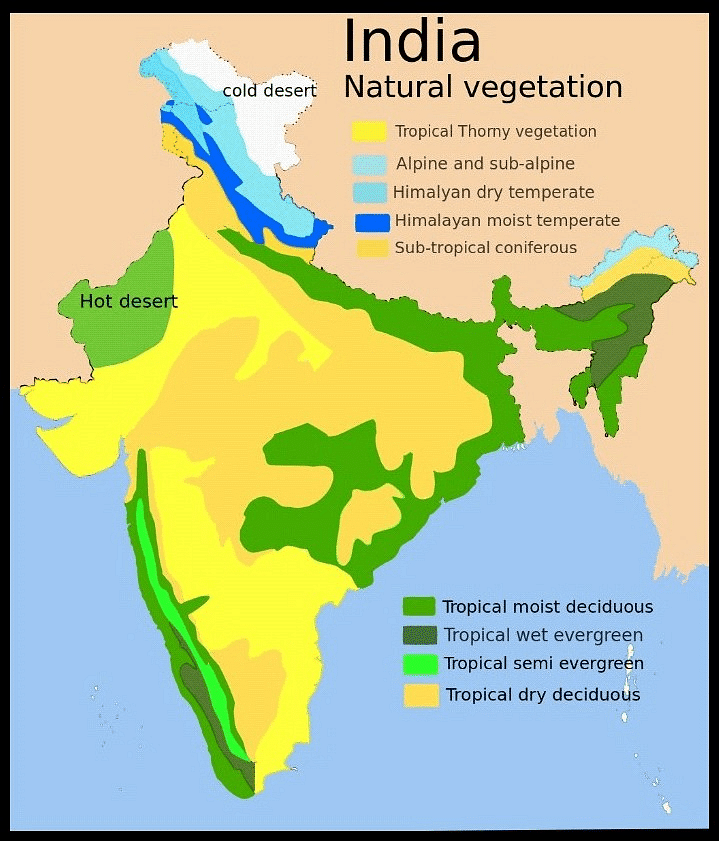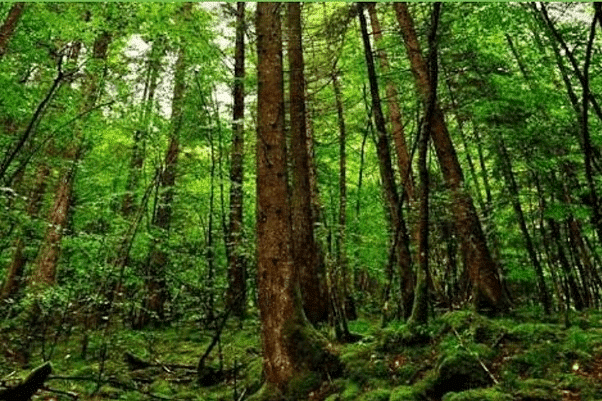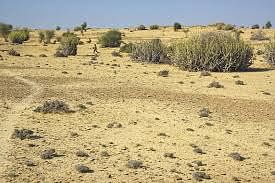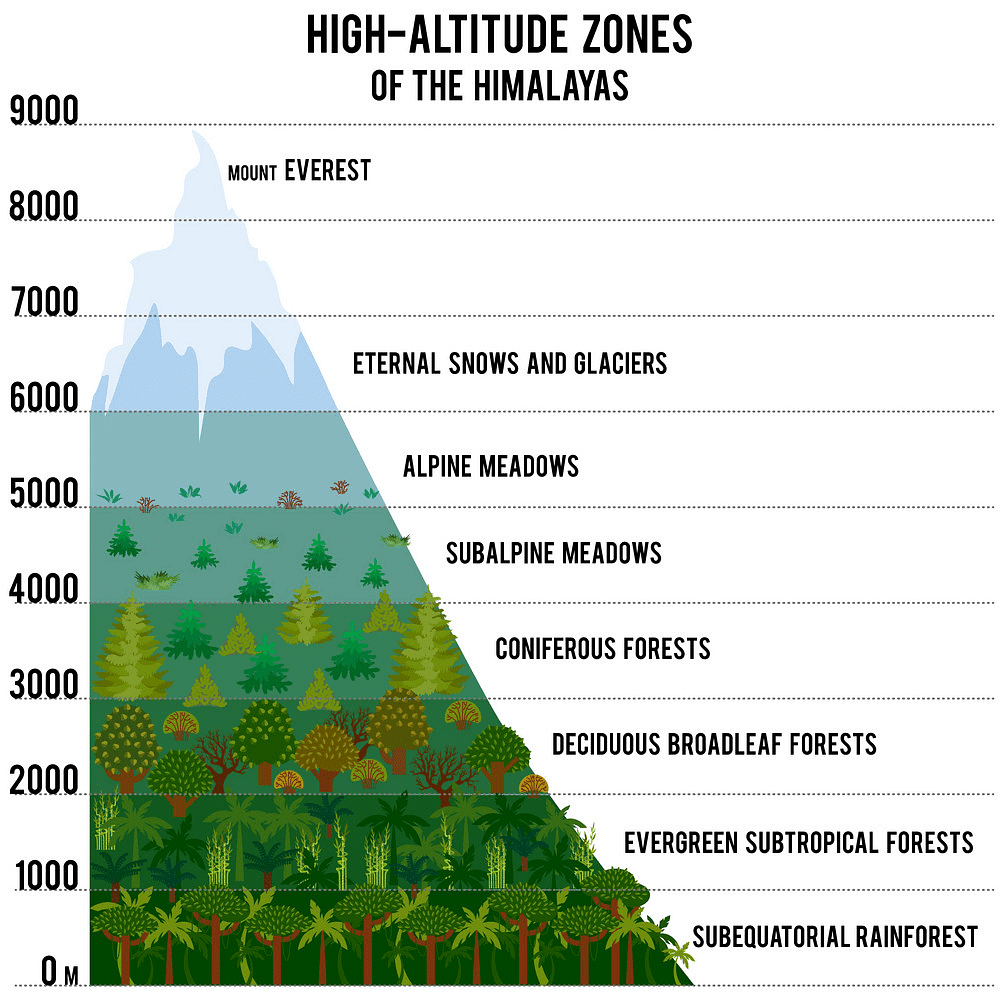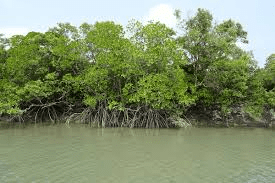Class 9 Geography Chapter 5 Notes - Natural Vegetation and Wildlife
| Table of contents |

|
| Introduction |

|
| What is Natural Vegetation? |

|
| Types of Vegetation |

|
| Wildlife |

|
| Conclusion |

|
| Difficult Words |

|
Introduction
India is one of the twelve mega biodiversity countries of the world. With about 47,000 plant species, India occupies tenth place in the world and fourth in Asia in plant diversity.
- There are about 15,000 flowering plants in India which account for 6 percent of the world’s total number of flowering plants. The country has many non-flowering plants such as ferns, algae, and fungi.
- India also has 89,000 species of animals as well as a rich variety of fish in its fresh and marine waters.
What is Natural Vegetation?
Natural Vegetation refers to a plant community that has grown naturally without human aid and has been left undisturbed by humans for a long time. This is termed as virgin vegetation.
- Thus, cultivated crops, and fruits, orchards are a part of vegetation but not natural vegetation.
 Distribution of Various Types of Vegetation in India
Distribution of Various Types of Vegetation in India - Flora: The term flora is used to denote plants of a particular region or period.
- Fauna: The species of animals are referred to as fauna.
Types of Vegetation
India's diverse climate and geography support a wide variety of vegetation types, ranging from tropical rainforests to desert shrubs, reflecting the country's rich ecological diversity.
Let's discuss the Types of Vegetation in India in detail below:
Tropical Evergreen
- They are at their best in areas having more than 200 cm of rainfall with a short dry season.
- In these forests, trees grow up to 60 m & above.
 Tropical Evergreen Forests
Tropical Evergreen Forests - These forests yield hardwood trees.
- These forests are found in rainy parts of Western Ghats, Assam, West Bengal, Lakshadweep, and Andaman & Nicobar Islands.
- Ebony, Mahogany, Rosewood, Rubber, and Cinchona are some of the important trees.
- In these forests, a large number of plant species are found in one place. It creates difficulty in their commercial exploitation.
- Elephants, monkeys, Lemur, and Deer are some common animals found in these forests.
Tropical Deciduous Forests
- These are the most widespread forests of India.
- They are also called the monsoon forests and spread over the region, receiving rainfall between 200 cm and 70 cm.
- Trees of this forest type shed their leaves for about six to eight weeks in dry summer.
Based on the availability of water, these forests are further divided into:
(a) Moist Deciduous
- These forests are found in areas of 100 cm to 200 cm of rainfall.
- Due to a long dry season, the trees shed their leaves during the dry season.
- Shisham, Bamboos, Sandalwood, Khair, Kusum, Arjun, Mulberry, and Sal are the common trees found in these forests.
- These forests cover a vast area of the country. Northeastern states, along the foothills of the Himalayas, Jharkhand, West Orissa, and Chhattisgarh, and on the Eastern slopes of the Western Ghats.
(b) Dry Deciduous
- These are found in areas having rainfall between 70 cm to 100 cm.
- These are found in the rainier part of the peninsular plateau and the plains of Bihar and U.P.
- These are open stretches in which Teak, Sal, Peepal, Neem grow.
- Most of these forests have been cleared for cultivation.
- In these forests, the common animals found are lions, tigers, pigs, deer and elephants. A huge variety of birds, lizards, snakes, and tortoises are also found here.
Thorn Forests and Shrubs
- Tropical thorn forests occur in areas that receive rainfall less than 70 cm.
- These consist of a variety of grasses and shrubs.
 Thorn Forest and Shrubs
Thorn Forest and Shrubs - It includes semi-arid areas of southwest Punjab, Haryana, Rajasthan, Gujarat, Madhya Pradesh, and Uttar Pradesh.
- In these forests, plants remain leafless for the most part of the year and give an expression of shrub vegetation.
- Important species found are babul, Kher and wild Date palm, Kikar, Neem, Khejri, Palas, etc.
Mountain Forests
In mountainous areas, the decrease in temperature with increasing altitude leads to the corresponding change in natural vegetation:
- The wet temperate type of forest is between a height of 1000 and 2000 meters. Evergreen broad-leaf trees such as oaks and chestnuts predominate.
- Between 1500 and 3000 meters, temperate forests containing coniferous trees like pine, deodar, silver fir, spruce, and cedar, are found. These forests cover mostly the Himalayas' southern slopes, places with high altitudes in southern and northeast India. At higher elevations, temperate grasslands are common.
 Distribution of Mountain Forest
Distribution of Mountain Forest - At high altitudes, generally more than 3600 meters above sea level, temperate forests and grasslands give way to the Alpine vegetation. Silver fir, junipers, pines, and birches are the common trees of these forests.
- Above Alpine vegetation, Alpine grasslands are found. These are used extensively for grazing by nomadic tribes like the Gujjars and the Bakarwals. At higher altitudes, mosses and lichens form part of tundra vegetation.
- The common animals found in these frosts are Kashmir stag, spotted dear, wild sheep, jackrabbit, Tibetan antelope, yak, snow leopard, squirrels, shaggy horn wild ibex, dear and rare red panda, sheep, and goats with thick hair.
Mangrove Forests
- These are found in the areas which are under the influence of tides having accumulated mud and silt.
- Dense mangroves are the common varieties with roots of plants submerged underwater.
 Mangrove Forest
Mangrove Forest - These forests are found in the deltas of Ganga, Mahanadi, Godavari, and Kaveri.
- The most important tree is the Sundari tree, after which the Sunderbans are named.
- The tree provides hard, durable, and strong wood, which is used for building boats and boxes.
- Royal Bengal Tiger is the famous animal in these forests. Turtles, crocodiles, gharials, and snakes are also found in these forests.
Wildlife
- India has a diverse and rich wildlife with approximately 90,000 animal species.
- The country is home to around 2,000 species of birds, accounting for 13% of the world's total.
- India also has a significant number of fish species, with 2,546 types, which make up a considerable portion of the world's fish population.
- The country shares 5 to 8% of the world's amphibians, reptiles, and mammals.
Biodiversity in India
India is home to an incredibly rich and diverse array of flora and fauna, making it one of the world's most biodiverse countries, with habitats ranging from tropical forests to arid deserts and high-altitude regions like the Himalayas.

Majestic Forest Dwellers
- Elephants thrive in the hot and wet forests of Assam, Karnataka, and Kerala.
- One-horned rhinoceroses inhabit swampy and marshy lands in Assam and West Bengal.
Arid Region Inhabitants
- Wild ass and camels are native to the arid regions of the Rann of Kachchh and the Thar Desert, respectively.
Other Wildlife in India
- Indian bison, nilgai (blue bull), chousingha (four-horned antelope), gazelle, various species of deer, and different types of monkeys are found across India.
Big Cats of India
India is the only country home to both tigers and lions.
- Indian lions are found in the Gir forest of Gujarat.
- Tigers inhabit the forests of Madhya Pradesh, the Sundarbans in West Bengal, and the Himalayan region.
Predators in Indian Wildlife
- Leopards, an important part of the cat family, are widespread predators in India.
Himalayan Wildlife
- The Himalayas support a wide variety of animals adapted to cold conditions, including:
- Yak, Tibetan antelope, bharal (blue sheep), wild sheep, kiang (Tibetan wild ass), ibex, bear, snow leopard, and the rare red panda. Rivers, lakes, and coastal areas of the Himalayas also have turtles, crocodiles, and gharials.
India's Birdlife
- India is home to diverse bird species such as peacocks, pheasants, ducks, parakeets, cranes, and pigeons, which are commonly found in forests and wetlands.
Biodiversity in Agriculture
- Crops in India have been selected from the rich biodiversity, including both edible and medicinal plants.
- Animals have been domesticated from nature, providing draft power, transportation, meat, and other resources.
- Fish serve as a nutritious food source, while insects play vital roles in pollination and biological control of crops.
Wildlife Conservation in India
Conservation is essential as the ecosystem has been disturbed due to excessive exploitation of plant and animal resources. Around 1,300 plant species and some animal species are endangered or extinct.
- The main causes of this threat to nature are hunting for commercial purposes, pollution from chemical and industrial waste, introduction of alien species, and deforestation for cultivation and habitation.
- The government has implemented various measures to protect the flora and fauna of the country.
- Eighteen biosphere reserves have been established, including the Sundarbans, Nanda Devi, Gullol Mannar, Nilgiri, Nokrek, Great Nicobar, Simlipal, Pachmarhi, Achanakmar-Amarkantak, Agasthyamalai, Kangchendzonga, and Panna. These reserves are also included in the world network of biosphere reserves.

- The government has provided financial and technical assistance to several botanical gardens since 1992.
- Initiatives like Project Tiger, Project Rhino, Project Great Indian Bustard, and other eco-developmental projects have been introduced.
- The country has 103 National Parks, 563 Wildlife Sanctuaries, and Zoological Gardens to preserve the natural heritage.
- It is crucial for everyone to understand the importance of the natural ecosystem for our own survival.
- Immediate action is required to eliminate the destruction of the natural environment.
Conclusion
This chapter emphasizes the importance of conserving forests and wildlife. It highlights the diverse types of vegetation found in India and their critical role in maintaining ecological balance. It underscores the interdependence between various species and their habitats, illustrating the need for sustainable practices to protect these natural resources. Understanding the significance of biodiversity helps in appreciating the need for conservation efforts. Protecting natural vegetation and wildlife is essential for sustaining the environment, ensuring the well-being of future generations, and maintaining the planet's health.
Difficult Words
- Conserving - Protecting from loss or harm; preserving.
- Vegetation - Plants considered collectively, especially those found in a particular area or habitat.
- Ecological Balance - A stable state in which natural communities of organisms interact with their environment.
- Interdependence - Mutual reliance between two or more groups.
- Species - A group of living organisms consisting of similar individuals capable of exchanging genes or interbreeding.
- Habitats - The natural environment in which an organism lives.
- Sustainable Practices - Methods of using resources that do not deplete them or cause long-term environmental harm.
- Biodiversity - The variety of plant and animal life in a particular habitat or in the world as a whole.
- Conservation - The action of conserving something, especially the environment.
- Resources - Supplies of materials or assets that can be drawn on in order to function effectively.
- Sustaining - Strengthening or supporting physically or mentally.
- Well-being - The state of being comfortable, healthy, or happy.
|
52 videos|437 docs|80 tests
|
FAQs on Class 9 Geography Chapter 5 Notes - Natural Vegetation and Wildlife
| 1. What is natural vegetation? |  |
| 2. What are the different types of vegetation? |  |
| 3. What is the importance of wildlife in natural vegetation? |  |
| 4. How does human activity impact natural vegetation and wildlife? |  |
| 5. How can we conserve natural vegetation and wildlife? |  |

|
Explore Courses for Class 9 exam
|

|
